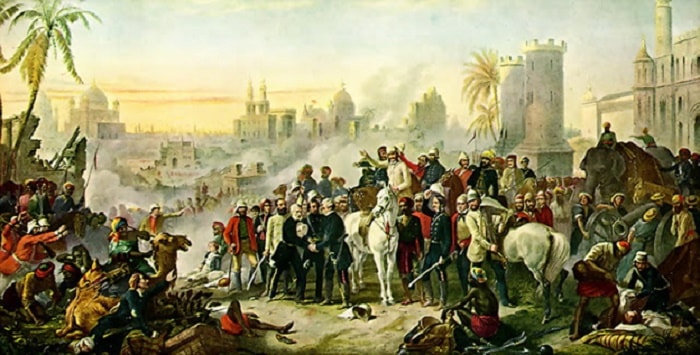Africa and Middle EastAllAllAllAllAsia and OceaniaEuropeResolvedResolvedResolvedResolvedThe Americas
Britain, India and the Seven Years War
The Seven Years War was the first intercountry battle fought between world superpowers. It took place in Europe, India and America as well as with a naval component. Objectively a struggle for power between France and England, the Seven Years War intensified the conflict for trading influence on the subcontinent.

The Seven Years’ War was composed of two prominent struggles: the colonial and maritime conflict between France and Spain against Great Britain, and the struggle of Frederick The Great of Prussia against Austria, France, Russia and Sweden. By the end of the war, the colonial/maritime struggle proved victorious for Great Britain which served as a reflection of the prowess and technological capabilities of the British Armed Forces. Major fighting occurred in North America and the Indian subcontinent, where colonial legacies of the then-ruling powers still bears weight today.
The British effectively controlled the entire subcontinent through the British East India Company. The availability of spices sparked interest in Westerners, particularly the British. In the beginning, the British East India company founded in the year 1600 set up posts in India to encourage trade of spices and textiles. Because of this, British westerners became Indianized because of their deep affinity with exotic foreign goods. As their passion for trading grew, so did their hegemonic desire to control the subcontinent by fighting off the Indians and the French.
The British took control of India after their defeat of the French Empire during the Seven Years War. Immediately following, an Indian rebellion, led by a native group called the sepoys, led to an uprising called the Sepoy Mutiny, which challenged the authority of the British in the region as well as questioned the self-determination of local populations. The Indian Revolt of 1857 had diverse political, economic, military, religious and social implications. Many were killed in the short-lived 2 years of war. Multiple Indians were murdered in retaliation for standing up for their rights during the conflict.
After the British suppressed the violent uprising, they officially made India a part of the British Empire in 1858. While in the country, the British attempted to introduce social reform, forwarded formal education and promoted technological advanced. India, considered the “Crown Jewel of the British Empire,” lived close to starvation and experienced little respect for their own cultural and religious traditions under British rule.


